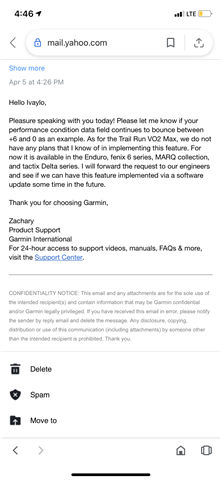(Note - I could've sworn we had a big discussion on the "coming" Vo2max in the Trail Running profile, but I can't find the thread now. Maybe it was deleted?)
Anyway, there was much discussion in that thread about the "how" this would be done. Well in DCRainmakers review of the coming Enduro watch, he has a long segment from FirstBeat's "HermanB" covering just that. Thought those that participated in that phantom thread might be interested. Here's the link and the segment quoted:
https://www.dcrainmaker.com/2021/02/garmin-enduro-gps-watch-in-depth-review.html
'At the most basic level, the analysis used to calculate VO2max compares how fast you are running compared to how hard your body works to maintain that pace. Given that we are using heart rate as the key input to determine your effort, it’s important to understand that there are times when your current HR accurately reflects your current speed and there are times when it does not.
So, there has always been a lot of filtering and prioritizing happening in the background to sort out things like uphill/downhill, stops/starts, intervals and naturally occurring changes in intensity, etc… all in pursuit of identifying when relationship between and internal and external workloads reflects your fitness level (VO2max) and when it doesn’t. For all the obvious reasons, trail running adds a substantial layer of complexity to this problem. Changes in elevation have been incorporated into the analysis for many years now and that remains the case for trail running-based VO2max – but only to the degree to which it has been previously used.
The new element in the mix here is how accelerometer data is being used. We are basically looking for and identifying patterns in how you are running to recognize when more energy than normal is being used to keep pace. In other words, it’s about attributing the fact that your body is working harder due to the ruggedness and changes of the trail instead of simply assuming you’re working harder than normal because of inadequate recovery or a drop in fitness. Without taking this perspective into account, your VO2 max would almost always be underestimated during trail runs. Getting a VO2max estimate from your trail runs is kind of neat but I think the ultimate value here is probably that it also means you are getting more data fed into things like Training Status. Perhaps it’s worth noting that there isn’t a separate “trail running VO2max analysis.” The developments that make estimating VO2 max during trail runs possible are baked into the normal VO2 max calculation, making the whole shebang more robust.
From a user perspective, there is a setting that still allows a user to disable Trail Run VO2max calculations in the Trail Run profile. A big benefit of the Trail Run profile in the past is that users could effectively use it to “screen out” trail runs so they wouldn’t affect their VO2max, Training Status, etc. If users still want to exercise caution with VO2max on trail runs (especially, say, if they are wearing a pack), they can use this setting to still “disqualify” a run from generating a VO2max so it doesn’t mess with their other features.”



